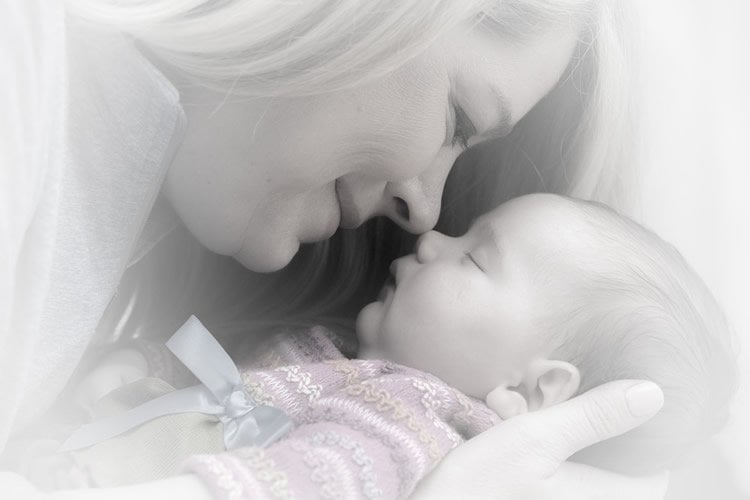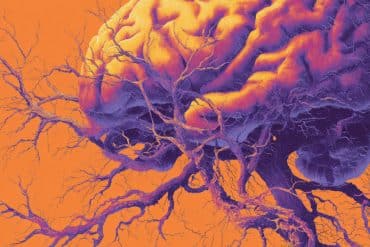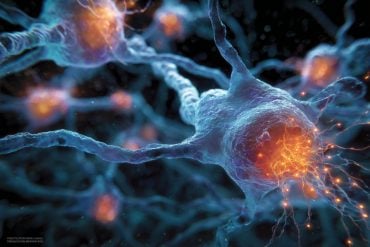Summary: Children who experienced higher levels of distress and less physical contact had a lower epigenetic age than those who were picked up and held more frequently, researchers report. Lower epigenetic age, researchers note, may impede a child’s ability to thrive.
Source: UBC.
The amount of close and comforting contact between infants and their caregivers can affect children at the molecular level, an effect detectable four years later, according to new research from the University of British Columbia and BC Children’s Hospital Research Institute.
The study showed that children who had been more distressed as infants and had received less physical contact had a molecular profile in their cells that was underdeveloped for their age – pointing to the possibility that they were lagging biologically.
“In children, we think slower epigenetic aging might indicate an inability to thrive,” said Michael Kobor, a Professor in the UBC Department of Medical Genetics who leads the “Healthy Starts” theme at BC Children’s Hospital Research Institute.
Although the implications for childhood development and adult health have yet to be understood, this finding builds on similar work in rodents. This is the first study to show in humans that the simple act of touching, early in life, has deeply-rooted and potentially lifelong consequences on genetic expression.
The study, published last month in Development and Psychopathology, involved 94 healthy children in British Columbia. Researchers from UBC and BC Children’s Hospital asked parents of 5-week-old babies to keep a diary of their infants’ behavior (such as sleeping, fussing, crying or feeding) as well as the duration of caregiving that involved bodily contact. When the children were about 4 1/2 years old, their DNA was sampled by swabbing the inside of their cheeks.
The team examined a biochemical modification called DNA methylation, in which some parts of the chromosome are tagged with small molecules made of carbon and hydrogen. These molecules act as “dimmer switches” that help to control how active each gene is, and thus affect how cells function.
The extent of methylation, and where on the DNA it specifically happens, can be influenced by external conditions, especially in childhood. These epigenetic patterns also change in predictable ways as we age.

Scientists found consistent methylation differences between high-contact and low-contact children at five specific DNA sites. Two of these sites fall within genes: one plays a role in the immune system, and the other is involved in metabolism. However, the downstream effects of these epigenetic changes on child development and health aren’t known yet.
The children who experienced higher distress and received relatively little contact had an “epigenetic age” that was lower than would be expected, given their actual age. Such a discrepancy has been linked to poor health in several recent studies.
“We plan on following up to see whether the ‘biological immaturity’ we saw in these children carries broad implications for their health, especially their psychological development,” says lead author Sarah Moore, a postdoctoral fellow. “If further research confirms this initial finding, it will underscore the importance of providing physical contact, especially for distressed infants.”
Source: Brian Kladko – UBC
Publisher: Organized by NeuroscienceNews.com.
Image Source: NeuroscienceNews.com image is in the public domain.
Original Research: Abstract for “Epigenetic correlates of neonatal contact in humans” by Sarah R. Moore, Lisa M. McEwen, Jill Quirt, Alex Morin, Sarah M. Mah, Ronald G. Barr, W. Thomas Boyce, and Michael S. Kobor in Development and Psychopathology. Published online November 22 2017 doi:10.1017/S0954579417001213
[cbtabs][cbtab title=”MLA”]UBC “Holding Infants, Or Not, Can Leave Traces on Their Genes.” NeuroscienceNews. NeuroscienceNews, 27 November 2017.
<https://neurosciencenews.com/genetics-holding-babies-8033/>.[/cbtab][cbtab title=”APA”]UBC (2017, November 27). Holding Infants, Or Not, Can Leave Traces on Their Genes. NeuroscienceNews. Retrieved November 27, 2017 from https://neurosciencenews.com/genetics-holding-babies-8033/[/cbtab][cbtab title=”Chicago”]UBC “Holding Infants, Or Not, Can Leave Traces on Their Genes.” https://neurosciencenews.com/genetics-holding-babies-8033/ (accessed November 27, 2017).[/cbtab][/cbtabs]
Abstract
Epigenetic correlates of neonatal contact in humans
Animal models of early postnatal mother–infant interactions have highlighted the importance of tactile contact for biobehavioral outcomes via the modification of DNA methylation (DNAm). The role of normative variation in contact in early human development has yet to be explored. In an effort to translate the animal work on tactile contact to humans, we applied a naturalistic daily diary strategy to assess the link between maternal contact with infants and epigenetic signatures in children 4–5 years later, with respect to multiple levels of child-level factors, including genetic variation and infant distress. We first investigated DNAm at four candidate genes: the glucocorticoid receptor gene, nuclear receptor subfamily 3, group C, member 1 (NR3C1), μ-opioid receptor M1 (OPRM1) and oxytocin receptor (OXTR; related to the neurobiology of social bonds), and brain-derived neurotrophic factor (BDNF; involved in postnatal plasticity). Although no candidate gene DNAm sites significantly associated with early postnatal contact, when we next examined DNAm across the genome, differentially methylated regions were identified between high and low contact groups. Using a different application of epigenomic information, we also quantified epigenetic age, and report that for infants who received low contact from caregivers, greater infant distress was associated with younger epigenetic age. These results suggested that early postnatal contact has lasting associations with child biology.
“Epigenetic correlates of neonatal contact in humans” by Sarah R. Moore, Lisa M. McEwen, Jill Quirt, Alex Morin, Sarah M. Mah, Ronald G. Barr, W. Thomas Boyce, and Michael S. Kobor in Development and Psychopathology. Published online November 22 2017 doi:10.1017/S0954579417001213






